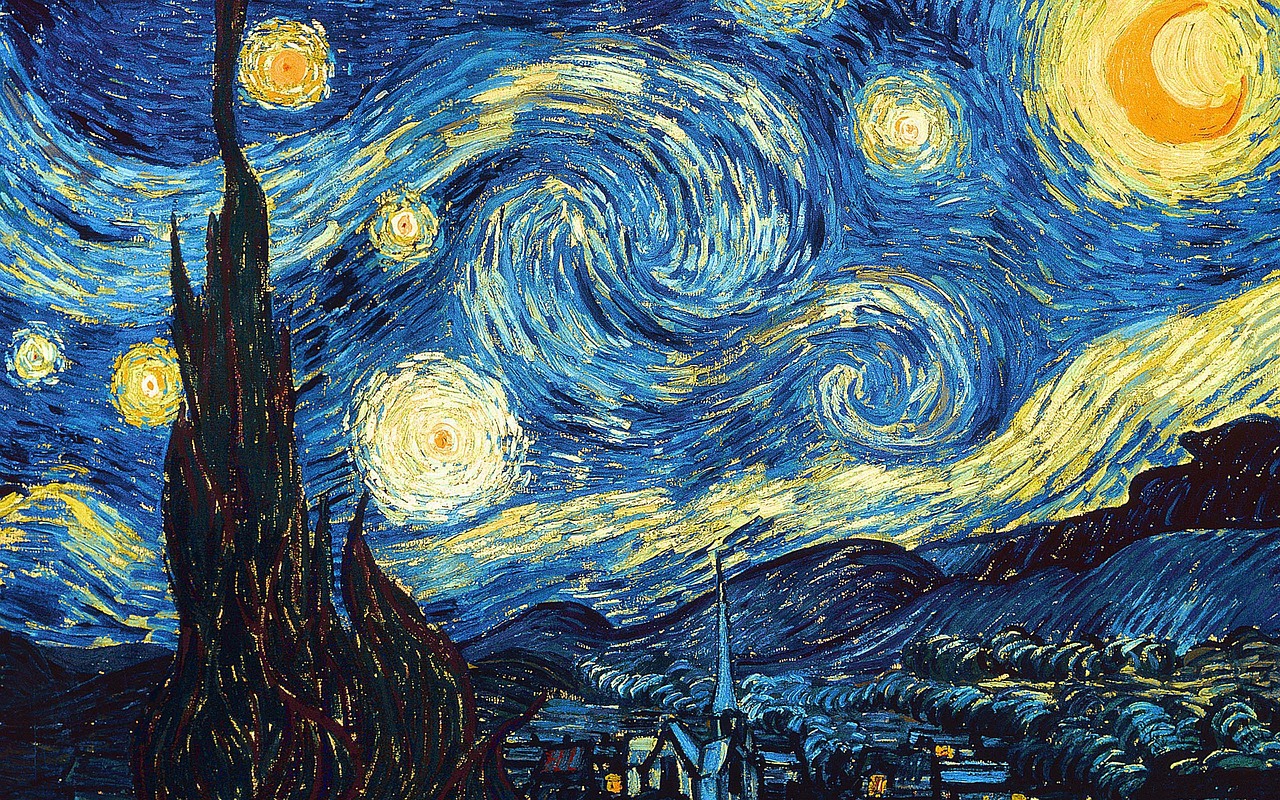News blog - artistravel international
The Hidden Math in Van Gogh's "Starry Night"
One of the most remarkable aspects of the human brain is its ability to recognize patterns and describe them. Among the hardest patterns to understand is the concept of turbulent flow in fluid dynamics. Werner Heisenberg, a German physicist, once said that, if he ever was to meet god, he would ask them “Why relativity? And why turbulence?” Heisenberg was sure of god having an answer for the first question. Mathematically, turbulence is one of the most difficult things to understand or even explain, but through art we are able to depict the way it looks – just how it is done in one of the most famous paintings in the world.
In 1889 Vincent Van Gogh painted the nightly view from his room in the St-Paul asylum in St Rémy he stayed in, and later called it The Starry Night. Van Gogh himself did not like this painting very much and critised it deeply. Circular brush strokes create a night sky filled with swirling clouds and eddies of stars. Van Gogh, among other impressionists, seemed to capture light differently than their predecessors. Rather capturing its motion than its brightness. The brain recognizes the contrast between the colours blue/black and yellow/white, but there is no blending, so the painting seems to pulse, flicker and radiate oddly. So through many little circled brush strokes, Van Gogh is actually able to depict how light moves.
A complete description of turbulence remains one of the unsolved problems in physics until this day, even though people have figured out to explain it mathematically. To sum up physicist’s and mathematician’s work, that says that a turbulent flow is self-similar if there is an energy cascade, in easier language: big eddies transfer their energy to smaller eddies, which do likewise at other scales. In the world of science, this includes, inter alia, Jupiter’s Great Red Spot, cloud formations and interstellar dust particles. In 2004 scientists saw the eddies of a distant cloud and gas around a star, and it reminded them of Van Gogh’s The Starry Night. Thus, to come back to the art part, this motivated scientists to study the luminance in Van Gogh’s paintings in detail. They discovered that there is a distinct pattern of turbulent fluid structures hidden in many of his paintings. In the process of researching and inspecting the paintings were digitalised and it was measured how brightness varies between any two pixels. From the curves measured for pixel separation, the conclusion was that paintings from Van Gogh’s period of psychotic agitation behave remarkably similar to fluid turbulence. They were calmer periods in his life, which also shows in his paintings. When looking at his self-portrait with a pipe, there is no sign of this correspondence. There might be the conclusion that in his periods of intense suffering, Van Gogh was able to perceive and represent one of the most supremely difficult concepts and unsolved physic problems of mankind and to unite his unique mind’s eye with the deepest mysteries of movement, fluid and light. How he tapped into this complex natural phenomenon he was unaware of, remains inexplicable to this day.
Posted in artistravel international news, Artists, Creativity, Painting on Dec 20, 2019


